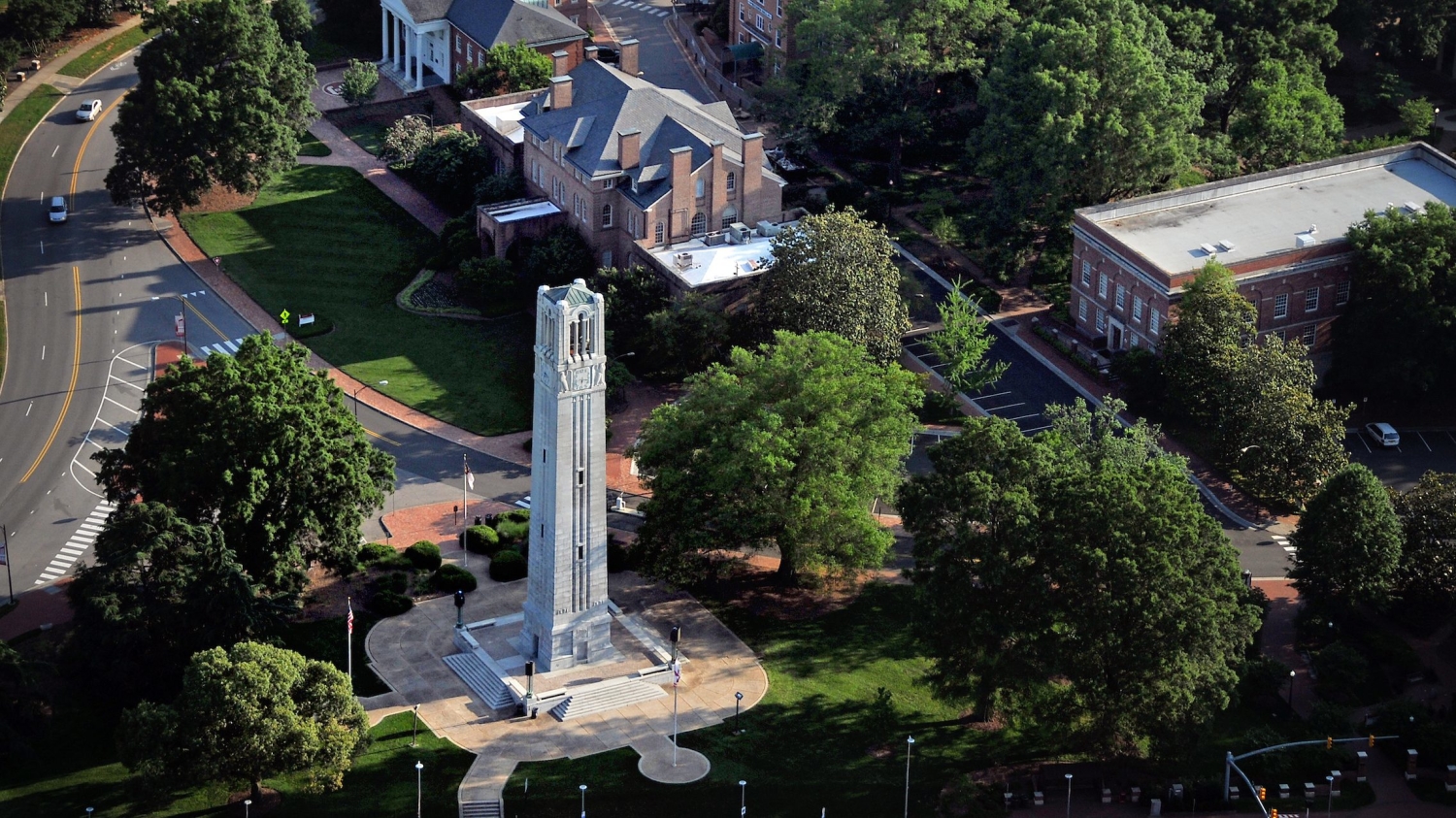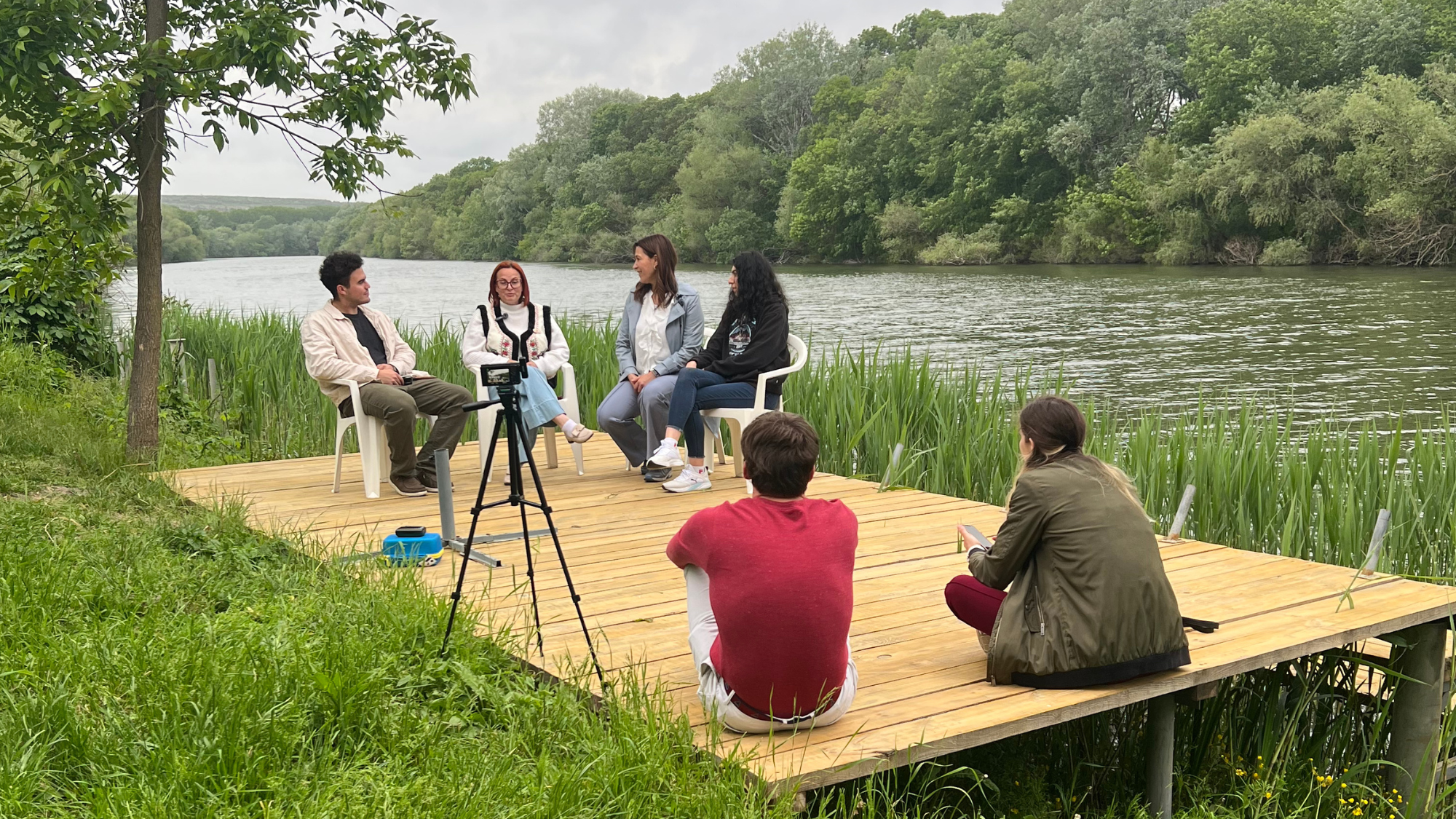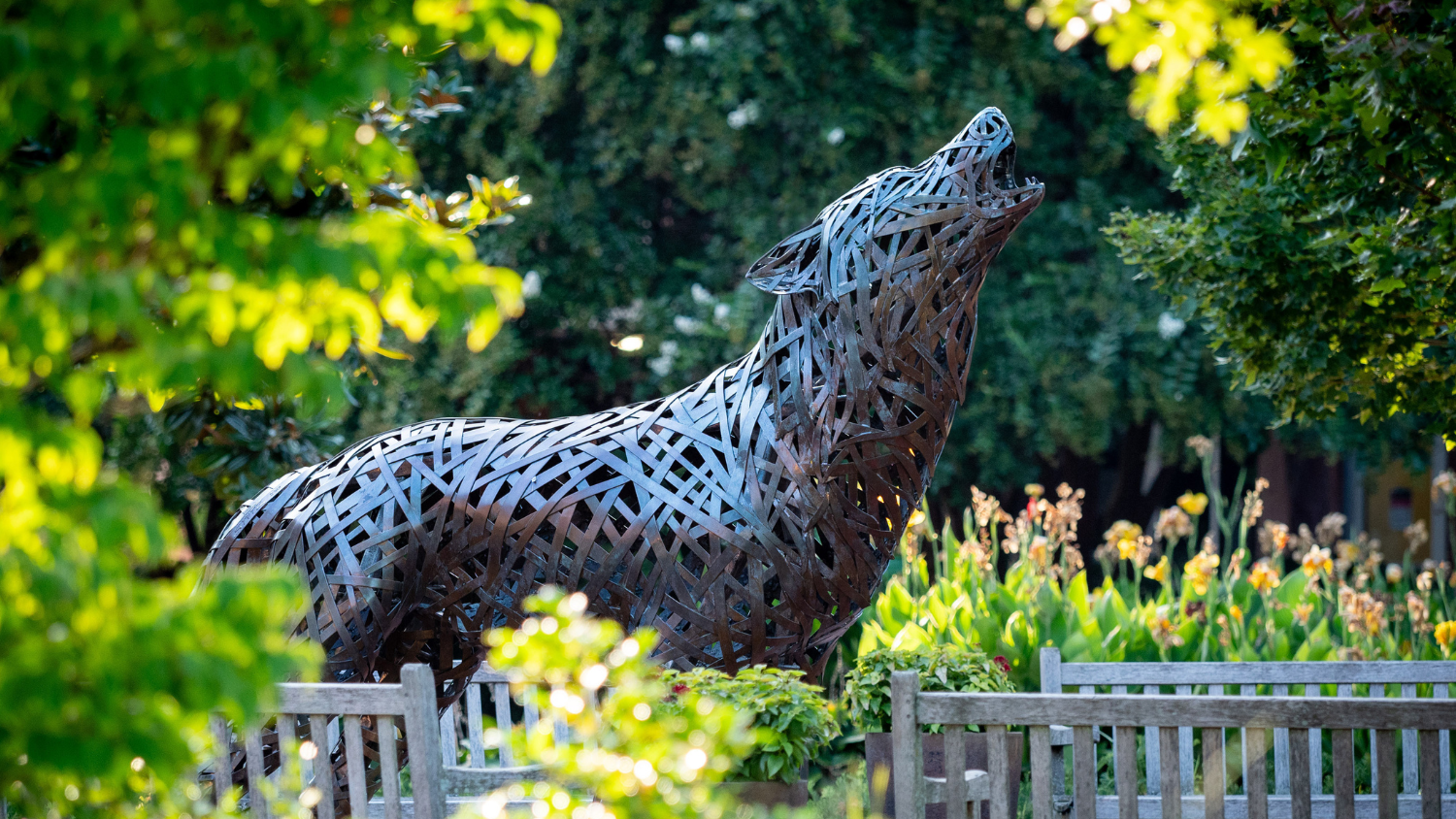A Century in the Making

For nearly a century, the Memorial Belltower has been NC State University’s most hallowed, recognized and photographed place.
But the picture of the Belltower is about to change. Scaffolding will appear around the tower’s facade in a few months, as a $6.5 million completion and restoration project gets underway in earnest.
Officials plan to start that first phase of visible-to-outside-observers work this fall. Construction at the site will last approximately a year. Ending this summer is a one-year design phase that has involved extensive study, testing and planning.
Most notably, after nearly a century, the Belltower’s bells are on the way. During the year of construction, they will be installed in the open belfry at the top, which currently contains only a speaker system.
“It’s an honor to complete something that was started so long ago and is going to be standing tall here forever,” said Damian Lallathin, an engineer with Capital Project Management, working closely with the Office of the University Architect as project manager for the Belltower restoration and completion.
The bells are the exciting headliner. But the project also will address decades of water damage to the tower’s interior and exterior, foundation and surroundings. The first phase of construction will focus on that aspect through cleaning, repair and site improvement.
Also on the to-do list: improving accessibility for visitors, including wheelchair users, to the plinth, the raised platform on which the tower stands; in the Belltower’s case, the plinth level is slightly more than 3-and-a-half feet above the surrounding concourse, or plaza, level. While the Belltower’s footprint won’t really change, the project team will reconfigure the side nearest the Pullen Road parking spaces. The location of a flagpole will shift and a new wide, gradually ascending path will lead from the parking area to the plinth, replacing the steps on the square plinth’s south side. The ascending path will be accessible via steps and a ramp near the parking area.
Various systems upgrades will take place, too, ranging from new LED lighting to replacement of the old mechanical clockworks with synchronized digital units.
When the project is finished, the area will be dedicated as the Memorial Belltower at Henry Square, in honor of the generous lead donors to the project. Bill (’81) and Frances Henry, of Gastonia, made that gift in fall 2017 as part of the university’s transformational $1.6 billion Think and Do the Extraordinary Campaign.
A Long Road to Completion
Philanthropy, collaboration and love for NC State and its people have always been at the core of the story of the 115-foot-tall Belltower, which was erected in sections during the 1920s through 1940s.
Vance Sykes, a member of NC State’s Class of 1907, led an alumni committee that hired New York architect William Henry Deacy in 1920 to design a memorial to alumni who had died as a result of service in World War I. The cornerstone was laid in 1921, but the Great Depression and World War II – and a corresponding lack of funds – meant that the Belltower was built in fits and starts, despite the efforts of alumni and other leaders including Professor Carroll Mann.
The stonework was completed in 1937 through the federal Works Progress Administration. The class of 1938, along with student honor societies, donated the clock and the class of 1939 bought floodlights. After other finishing touches, including the completion of the interior Shrine Room and its memorial plaque, a formal dedication took place Nov. 11, 1949.
The original vision for bells was never realized, however, so the Belltower technically has been a belltower in name only. With other campus facilities needs taking funding priority over the years, it primarily received critical patchwork repairs.
But over the past few years, donors renewed interest in completing the Belltower, before the Henrys’ support made the project fully possible.
Five bells, for example, were purchased a few years ago through Finish the Belltower, a grassroots campaign led by Matthew Robbins and other then-students. Those bells – including the 2,000-pounder bought by NC State’s Class of 2010 that will be the tower’s largest – are in storage, awaiting tuning then installation. Funds also were raised toward three additional bells.
“This was about setting history right,” Robbins said of the Finish the Belltower effort. He and fellow alumnus Michael Thompson have completed extensive archival research into the tower and the men it honors. “We wanted to carry on the legacy of the people who started the Belltower and to listen where no one was listening. When you read the letters between the architect and the committee, you can almost hear the pain about not having enough money to finish the heart of this monument. It’s like they were directly speaking to us.”
The remaining bells for a 55-bell carillon will be cast starting this summer by B.A. Sunderlin Bellfoundry just north of Richmond, Virginia.
And yes, workers eventually will remove the top of the Belltower and use a crane to lower each bell into place in a massive frame.
A carillon room, or playing cabin, will be built at the top of the tower, just below clock level. It will feature a wooden keyboard with batons and foot pedals, as well as an electronic carillon with an auxiliary control panel in Holladay Hall. The old carillon will be removed from that space.
Workers will take out the ceiling of the Belltower’s Shrine Room and slightly redesign the existing framing of the memorial plaque in order to install stairs winding up around the tower’s inside perimeter to the carillon room. They’ll be metal, with a more decorative stone portion in the Shrine Room, and will replace a narrow steel ladder that currently provides upward access for maintenance. The Shrine Room will get a higher partial ceiling, complete with pendant lighting.
That part of the project includes other items such installation of a new HVAC system to protect the wood of the carillon and provide comfort for anyone playing it. The addition of bird screens is planned for the belfry openings.
Reversing and Ensuring Against Damage
The design-build team of New Atlantic Contracting Inc. and Walter Robbs Callahan & Pierce Architects PA has completed structural, soil, thermographic and other testing to verify and document existing conditions and needs, and to establish detailed design solutions, construction schematics, timelines and the like. Decisions both large (type of stairs) and small (yes, the minor hole in the capstone at the top northwest corner struck by lightning in 2009 will remain) have been made. As much as possible, the team is following Deacy’s original blueprints, plans and vision, and staying true to the Belltower’s era in selection of new light fixtures, for example.
Studies have showed that the Belltower itself is in excellent structural condition with no significant signs of lateral movement or settlement, Lallathin noted. Installation of the carillon is fairly straightforward.
The bad news, however, is extensive surface damage to the concrete, granite, serpentine and marble throughout the tower, so repairs and ensuring future protection and stability are priorities. “The water infiltration and problems are coming from several sources,” he said.
These include wind-driven rain entering open windows and the belfry hatch; inadequate groundwater drainage; moisture produced from natural seasonal cycles of cooling and heating; and seepage through deteriorating sheathing and sealing. Solutions include an interior window shutter system.
The first visible work this fall will include digging out and replacing much of the fill material under the plinth. The current clay mixture is holding moisture and allowing it to pool and wick up through masonry, to the degree that cracking and settling pavers surrounding the tower had to be replaced by gravel a few years ago. The project team will reinstall concrete flatwork to match the historic scoring pattern after upgrading the drainage system.
A major priority is restoring the extensively damaged marble and other materials in the Shrine Room and reconditioning the memorial plaque that’s in storage – temporarily replaced by a wood-and-photograph facsimile a few years ago because water was slowly erasing the names on it.
The project team plans to maintain some access to the Belltower site for major events, including the ring ceremony and other graduation-related activities, and will try to minimize the project’s impact at such times.
Once Belltower site work gets going, a webcam will allow the NC State community to keep an eye on progress.
“This is very exciting,” said Tom Stafford, the retired vice chancellor of student affairs who has led Belltower tours for more than a decade. “It’s going to be so beautiful – even more beautiful.”
This post was originally published in Giving News.


